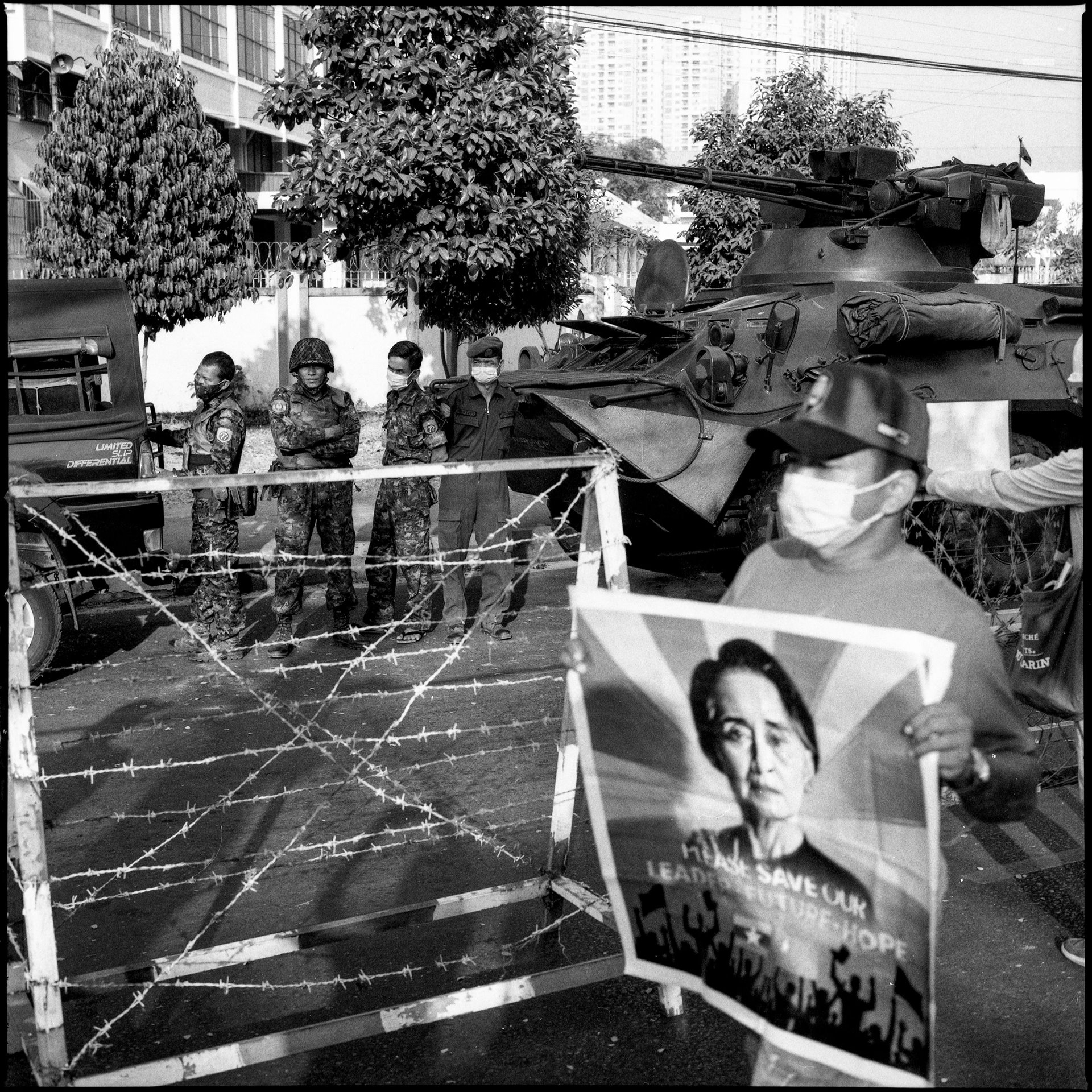Protesters in front of the Central Bank of Myanmar in Yangon demand the release of political prisoners, including democratic leader Aung San Suu Kyi (pictured on the poster). Protestors also called for bank employees to join the civil disobedience movement. Many employees of private banks had already joined, causing branch operations to halt.
On 1 February 2021, Myanmar’s military leaders carried out a coup deposing its democratically elected government and shattering a decade of political and social development. The new military junta immediately arrested democratic leader Aung San Suu Kyi, alongside other lawmakers and activists. Small acts of civilian defiance within the first few days after the coup rapidly grew to a nationwide peaceful uprising that protesters referred to as the Spring Revolution. The military met protests with deadly force and mass detention. According to Human Rights Watch, by the end of 2023 at least 24,000 anti-coup protesters had been arrested and 4,000 killed.
Peaceful protest soon grew into armed resistance, which developed into a civil war headed by the People’s Defense Forces (PDF) – the armed wing of a parallel government that was formed by ousted democratic lawmakers in the wake of the coup. As the PDF now partners with different ethnic insurgent groups around the country, the Myanmar military finds itself fighting on numerous fronts, from the borderlands near India, China, and Thailand to the country’s heartland. As the civil war continues, these joint rebel forces may play a crucial role in Myanmar’s future.
Working at great personal risk to capture the persistence of the struggle, the photographer used an analog, medium-format camera with black-and-white film for the project. Part of his reason for doing this was that they grew up learning about his country's history from black-and-white photos and film footage of previous military coups, in 1962 and 1988. Additionally, they chose to document the Spring Revolution without color in response to “a feeling that the country has entered dark days, having lost democracy.”
Are you a photographer and/or passionate about press freedom? Sign up for our newsletter to stay updated on our annual contest and to hear about exhibitions near you.
